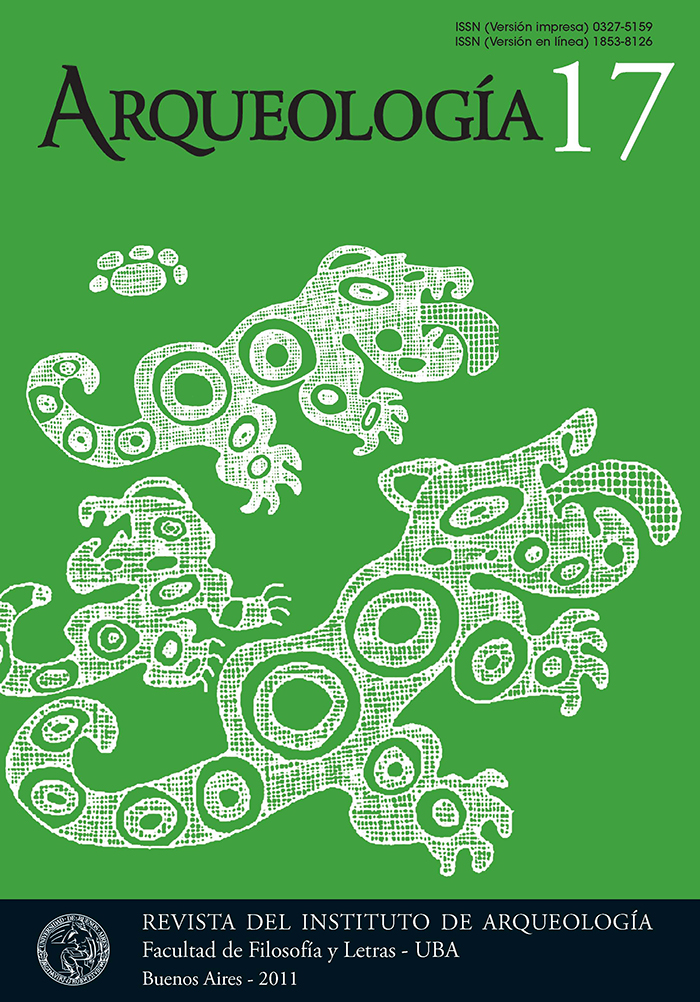Primeros datos sobre la procedencia de obsidiana de un sitio Formativo de Santa Rosa de los Pastos Grandes, Puna de Salta, Argentina
Palabras clave:
Análisis De Procedencia De Obsidianas, Contextos Agropastoriles Tempranos, Puna Argentina
Resumen
Los estudios de procedencia de materias primas permiten de algún modo orientar las investigaciones sobre interacciones sociales. Las obsidianas constituyen una materia prima ideal ya que, desde el punto de vista de su composición química, cada fuente es altamente homogénea internamente, pero significativamente distintas entre ellas; y aunque los artefactos confeccionados en obsidianas tengan una amplia dispersión, las fuentes están acotadas geográficamente. Este trabajo pretende ser un aporte a la información sobre las dinámicas respecto a las esferas de interacción en la Puna argentina en momentos de producción inicial de alimentos (ca. 2500- 1500 AP). En primera instancia, se presentan los resultados del análisis por XRF sobre las obsidianas provenientes de excavaciones arqueológicas de Quebrada Alta en Santa Rosa de los Pastos Grandes, en la Puna de Salta. Luego se caracterizan y discuten los contextos de hallazgo.Descargas
La descarga de datos todavía no está disponible.
Cómo citar
Mercuri, C., & Glascock, M. D. (1). Primeros datos sobre la procedencia de obsidiana de un sitio Formativo de Santa Rosa de los Pastos Grandes, Puna de Salta, Argentina. Arqueología, 17, 247-258. https://doi.org/10.34096/arqueologia.t17.n0.1845
Número
Sección
Notas
Los autores/as que publiquen en esta revista aceptan las siguientes condiciones:
- Los autores/as conservan los derechos de autor y ceden a la revista el derecho de la primera publicación, con el trabajo registrado mediante Licencia Creative Commons 4.0 Internacional (CC-BY-NC-SA), que permite a terceros utilizar lo publicado siempre que mencionen la autoría del trabajo y a la primera publicación en esta revista.
- Los autores/as pueden realizar otros acuerdos contractuales independientes y adicionales para la distribución no exclusiva de la versión del artículo publicado en esta revista (p.e. incluirlo en un repositorio institucional o publicarlo en un libro) siempre que indiquen claramente que el trabajo se publicó por primera vez en esta revista.
- Se permite y recomienda a los autores/as a publicar su trabajo en Internet (p.e. en sus sitios web personales o en depósitos institucionales), tanto antes como después de su publicación en esta revista, siempre y cuando proporcionen información bibliográfica que acredite, si procede, su publicación en ella. De esta manera, pueden favorecerse intercambios productivos y a una mayor y más rápida difusión del trabajo publicado (vea The Effect of Open Access).



.png)

(1)13.png)






1.jpg)
1.png)
1.jpg)


13.png)
1.png)


(1)1.png)









